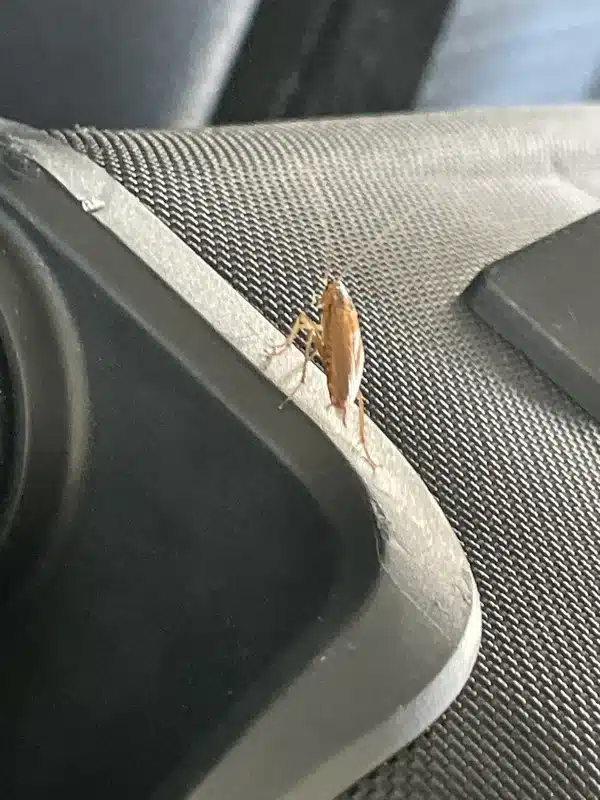Finding a roach in your home can be alarming, but not all roaches are the same. There’s a big difference between wood roach vs cockroach species that actually infest homes. Wood roaches are harmless outdoor insects that occasionally wander inside, while indoor cockroaches can establish colonies and spread disease.
In my four years as a registered technician with our family business, I’ve helped countless homeowners tell these apart. Many people panic when they spot a single wood roach in June, thinking they have a major infestation. Understanding the differences can save you stress and unnecessary treatment costs.
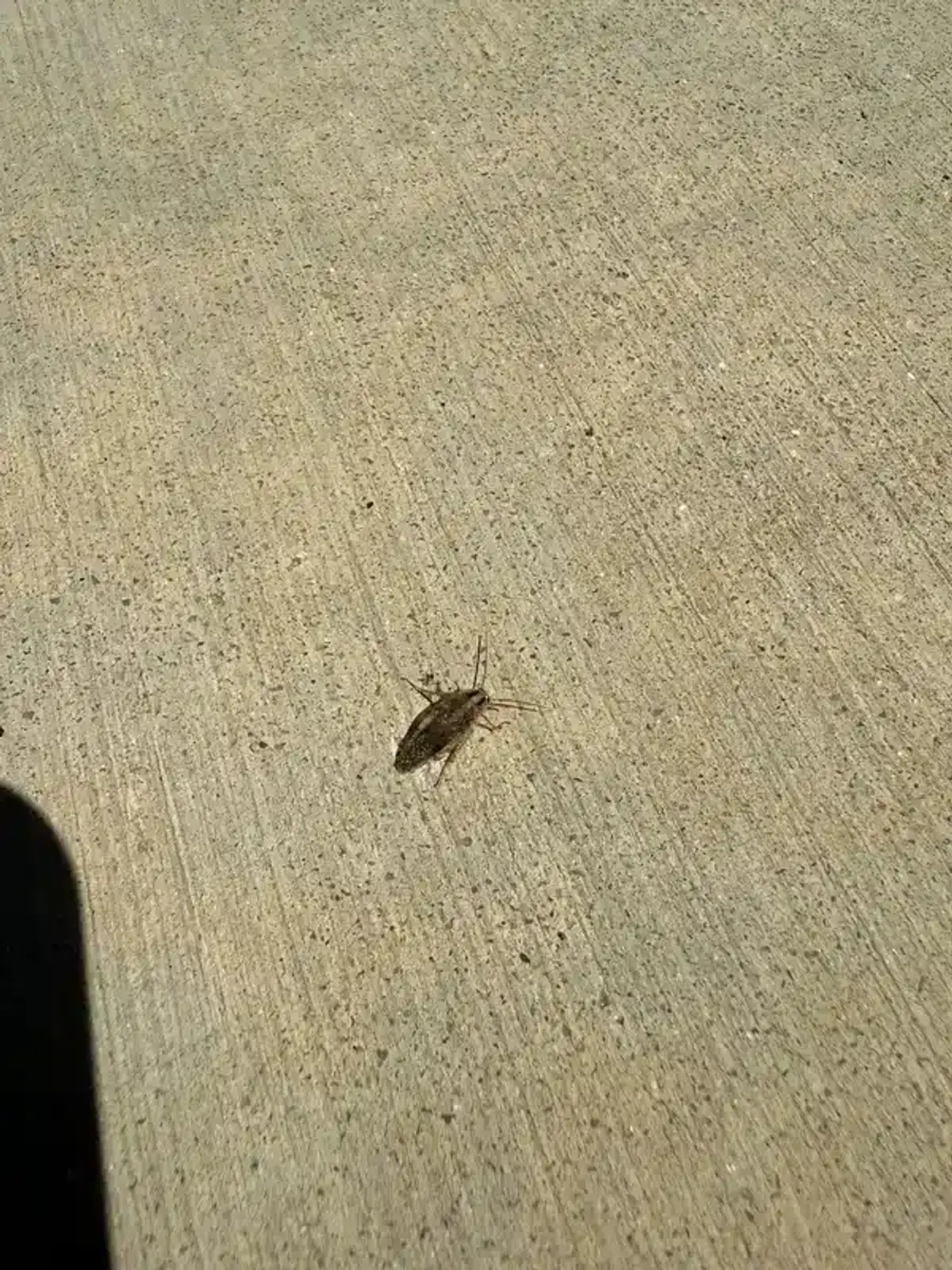
Physical Differences: Wood Roach vs Cockroach Identification
The easiest way to identify a wood roach is by looking for pale edges along their wings and body. Male wood roaches are about an inch long with chestnut-brown coloring and distinctive cream or transparent stripes along their wing margins. These pale markings are the telltale sign you’re dealing with a wood roach.
Female wood roaches are smaller and stockier with very short wings that don’t cover their entire abdomen. They can’t fly, unlike the males who are strong fliers.
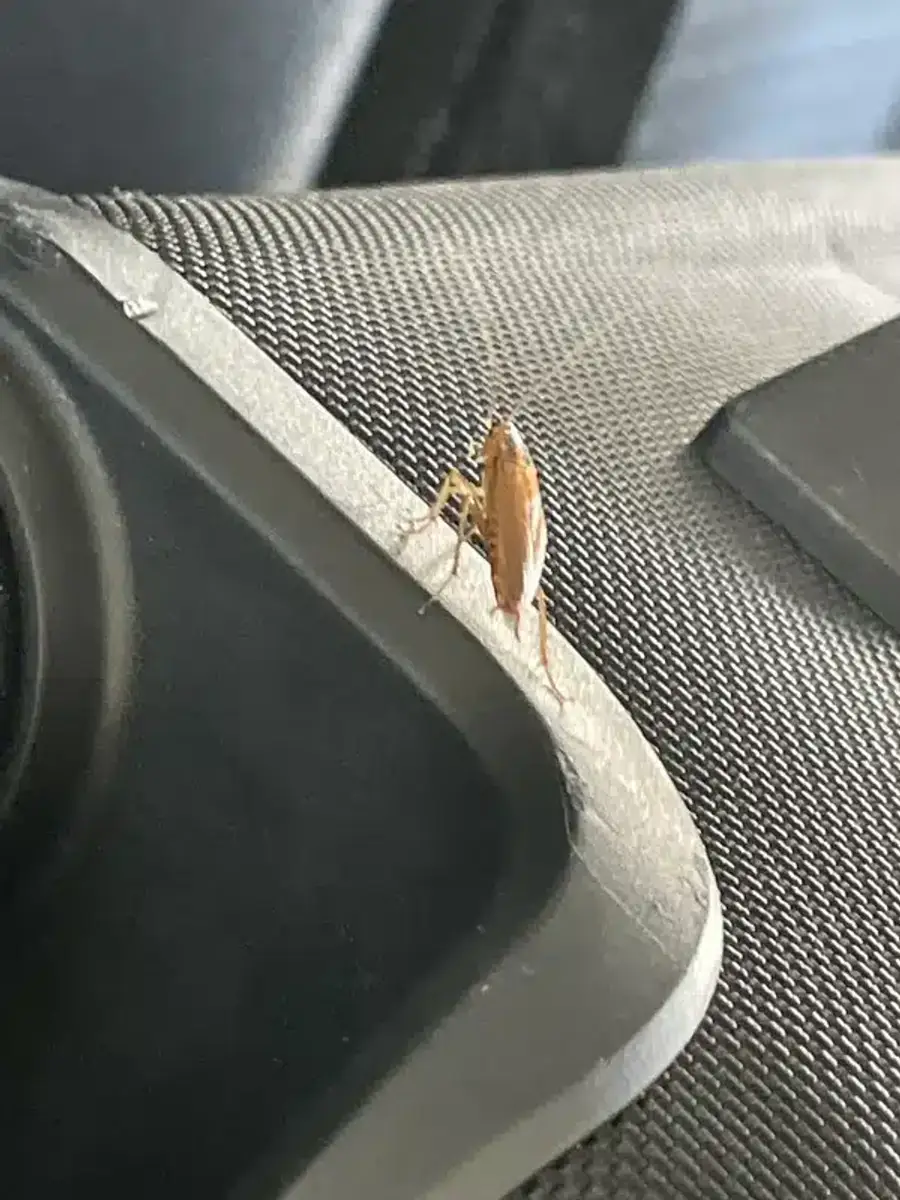

Indoor cockroach species look quite different. German roaches are smaller (about half an inch) with two distinct dark brown stripes on their backs. American roaches are much larger (up to 1.5 inches) with reddish-brown coloring. Oriental roaches appear glossy black and are often called “water bugs.”
Behavior Patterns: How Wood Roaches Act Differently
Wood roaches behave completely differently from indoor pest species. They don’t scurry away when you turn on lights or disturb them. Instead, they move slowly and openly, even during daylight hours.
Male wood roaches are strongly attracted to lights, especially during their mating season in late May and June. You’ll often find them near porch lights, pool areas, or security lighting. This light attraction is actually how most wood roaches accidentally enter homes.
Wood roaches are strictly outdoor decomposers that feed on decaying organic matter like leaf litter and loose bark. They require high moisture levels to survive and will quickly dehydrate indoors.
What does the science say?
According to Penn State Extension, wood roaches are strictly outdoor decomposers that feed on decaying organic matter like leaf litter and loose bark. Unlike indoor cockroaches that have adapted to low-moisture environments, wood roaches require high moisture levels to survive and will quickly dehydrate indoors, making them incapable of establishing indoor populations.
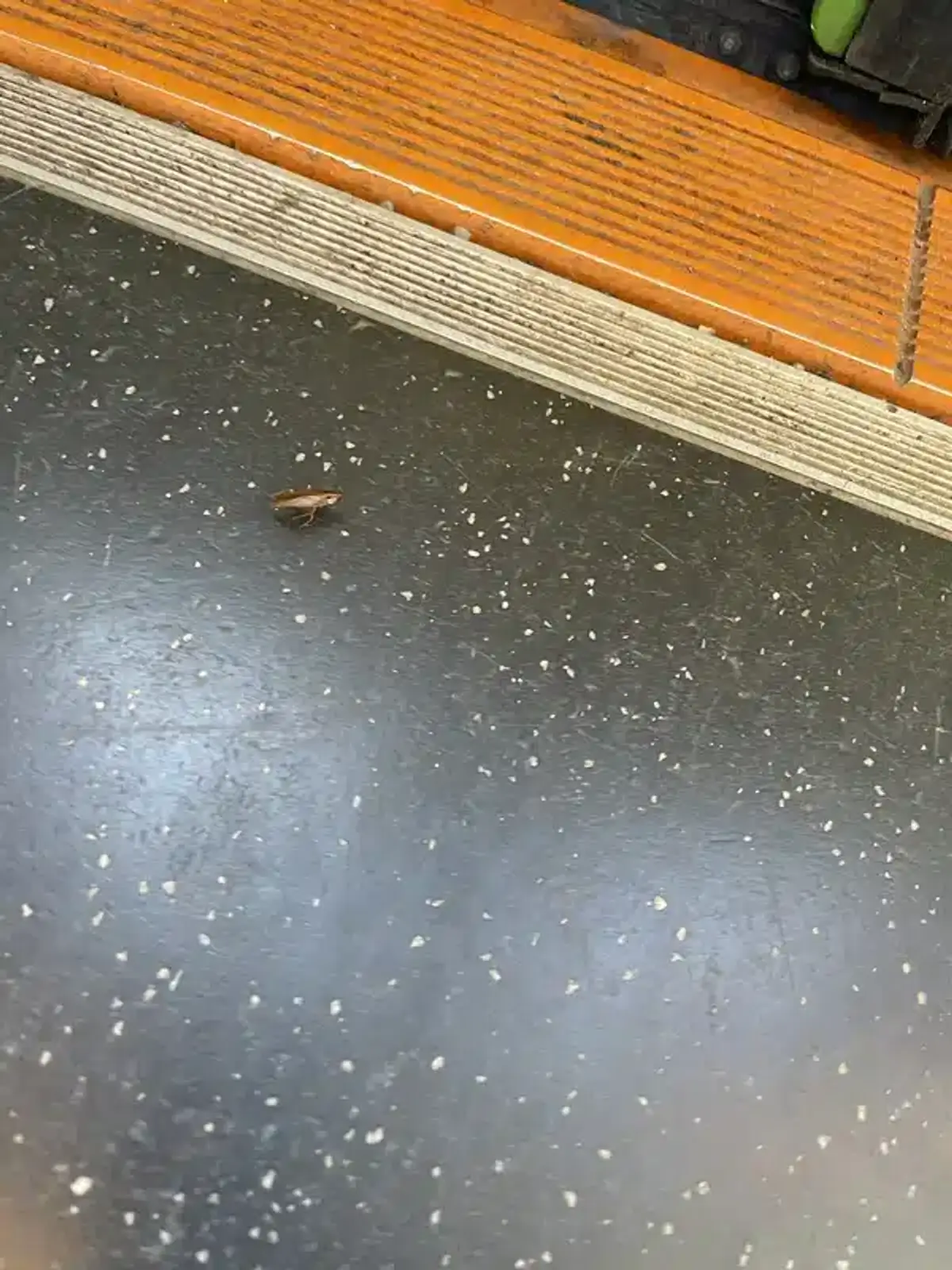
Indoor cockroaches like German roaches are nocturnal and hide during the day. They dart quickly into cracks when disturbed and actively seek food and water sources inside your home.
Wood Roach vs Cockroach Comparison
| Wood Roaches | Indoor Cockroaches | |
|---|---|---|
| Appearance | Pale wing edges, 1 inch long | Solid coloring, varies by species |
| Behavior | Slow-moving, active in daylight | Fast scurrying, nocturnal |
| Health Risk | None - harmless | Disease carriers |
| Indoor Survival | Die within 48-72 hours | Thrive and multiply |
| Treatment Needed | Simple removal only | Professional pest control |
Geographic Distribution of Wood Roaches and Pest Cockroaches
Wood roaches are mainly found in the Eastern United States, with Pennsylvania wood cockroach and Southern wood cockroach being the most common species in our Virginia, Maryland, and DC service area. Our family business has been serving the DMV for over 50 years, and wood roach calls definitely spike during late spring.
Indoor pest roaches can survive anywhere people live. German roaches especially thrive in heated buildings year-round, while wood roaches cannot survive our cold Mid-Atlantic winters indoors.
Health Risks: Wood Roach vs Cockroach Concerns
Here’s where the wood roach vs cockroach comparison becomes really important for your family’s health. Wood roaches are classified as nuisance pests with no evidence of disease transmission or food contamination. Because they die quickly indoors, they don’t have time to spread pathogens.
Safety Alert
Wood roaches pose zero health risks to your family, while indoor cockroaches can carry over 20 different pathogenic bacteria. This critical difference means you can simply remove wood roaches without worrying about contamination or disease transmission.
Indoor cockroaches are a completely different story. Indoor roaches carry over 20 pathogenic bacteria and produce allergens linked to childhood asthma. They contaminate food by regurgitating while feeding and leaving droppings on surfaces.
What does the science say?
According to Cornell University, indoor roaches carry over 20 pathogenic bacteria including Salmonella, Staphylococcus, and Streptococcus. They produce allergens linked to childhood asthma and can trigger allergic reactions. Unlike harmless wood roaches, indoor species contaminate food by regurgitating while feeding and leaving droppings on surfaces throughout your home.
In my experience treating German cockroach infestations, these indoor species require immediate professional treatment because they multiply rapidly and spread diseases throughout your home.
How Wood Roaches vs Cockroaches Survive and Reproduce
The biggest difference in wood roach vs cockroach biology is their ability to survive and breed indoors. Wood roaches cannot complete their life cycle inside heated buildings. Most die within 48-72 hours due to dehydration.
Wood roaches mate and lay eggs exclusively outdoors under bark or in debris during summer months. Even if a pregnant female somehow made it inside, the eggs wouldn’t survive the dry indoor conditions.
Indoor cockroaches have evolved specifically to exploit warm, humid conditions in buildings. German roaches can reach maturity in just 6-8 weeks indoors, creating explosive population growth.
What does the science say?
According to NC State Extension research, German roaches can reach maturity in just 6-8 weeks indoors under optimal conditions, with females producing 30-40 eggs per egg case. This rapid reproduction cycle means a small infestation can become thousands of roaches within months, unlike wood roaches which cannot complete their life cycle indoors at all.
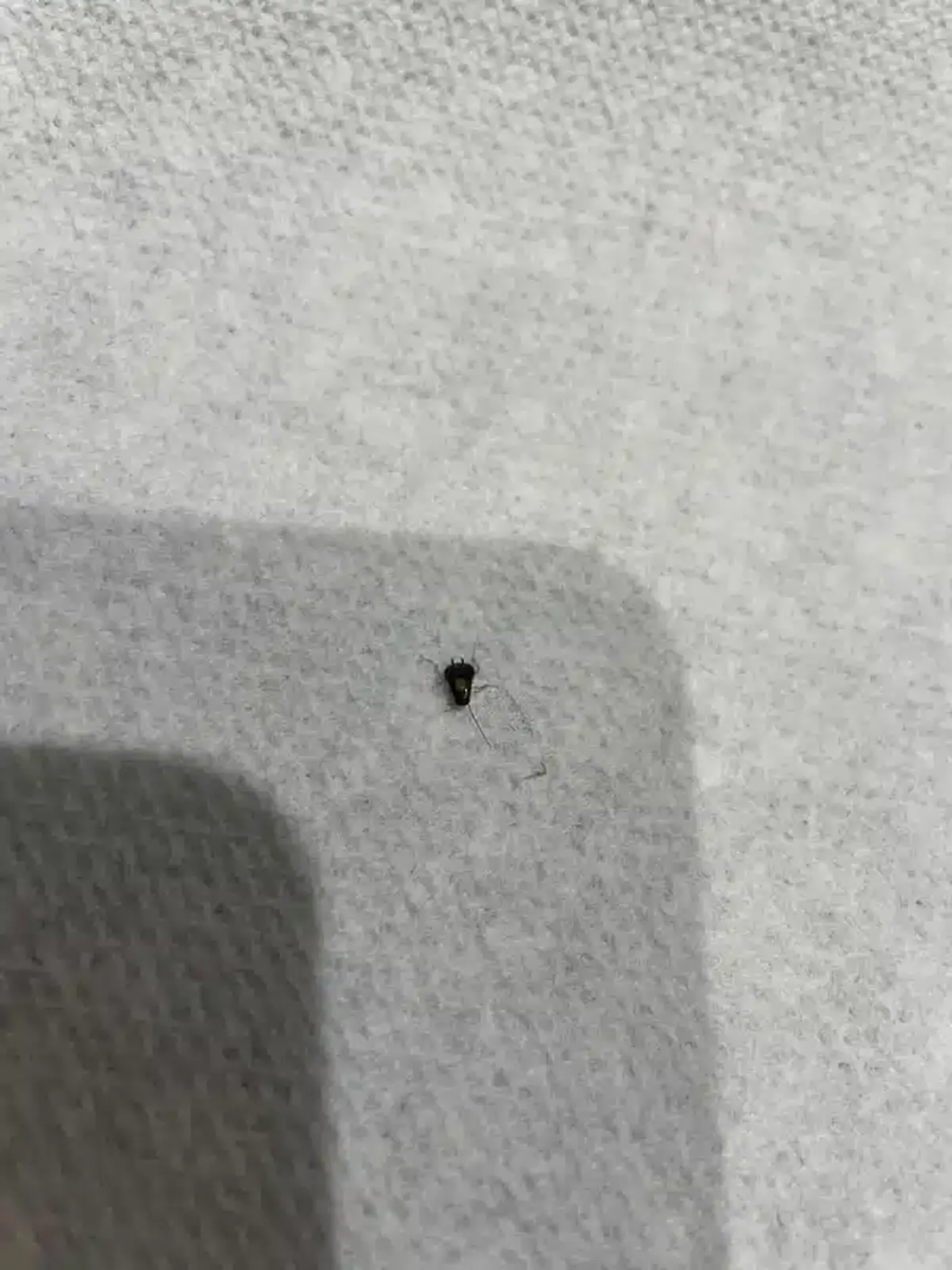
Seasonal Wood Roach vs Cockroach Appearance Patterns
Wood roaches follow predictable seasonal patterns that help distinguish them from year-round indoor pests. Males are most active during late May through June when they conduct mating flights at dusk. This is when most homeowners encounter them.
You might see wood roaches again in early fall, but the spring surge coincides with their peak reproductive activity. If you only see roaches during these specific periods, you’re likely dealing with wood roaches rather than an indoor infestation.
Indoor cockroaches remain active year-round in heated buildings. Finding roaches consistently throughout different seasons usually indicates an indoor breeding population that needs professional treatment.
How Wood Roaches Enter Homes
Wood roaches enter homes accidentally through several common pathways:
- Flying toward porch, patio, or security lights during evening hours
- Hitchhiking on firewood, camping gear, or holiday greenery brought inside
- Crawling through gaps under doors, unscreened windows, or utility openings
- Following light sources through open doors during summer evenings
According to Iowa State University Extension, wood roaches are particularly drawn to bright white lights during their mating flights. Properties near wooded areas see more wood roach activity.
Essential Wood Roach Prevention Steps
- Lighting Changes: Switch porch and patio lights to yellow LED “bug lights” during late May through June mating season
- Firewood Storage: Keep firewood stacks at least 20 feet away from your home’s foundation and off the ground
- Entry Point Sealing: Install tight door sweeps, repair torn window screens, and seal gaps around utility lines
- Outdoor Cleanup: Remove leaf litter, dead branches, and wood debris from around your foundation where wood roaches naturally live
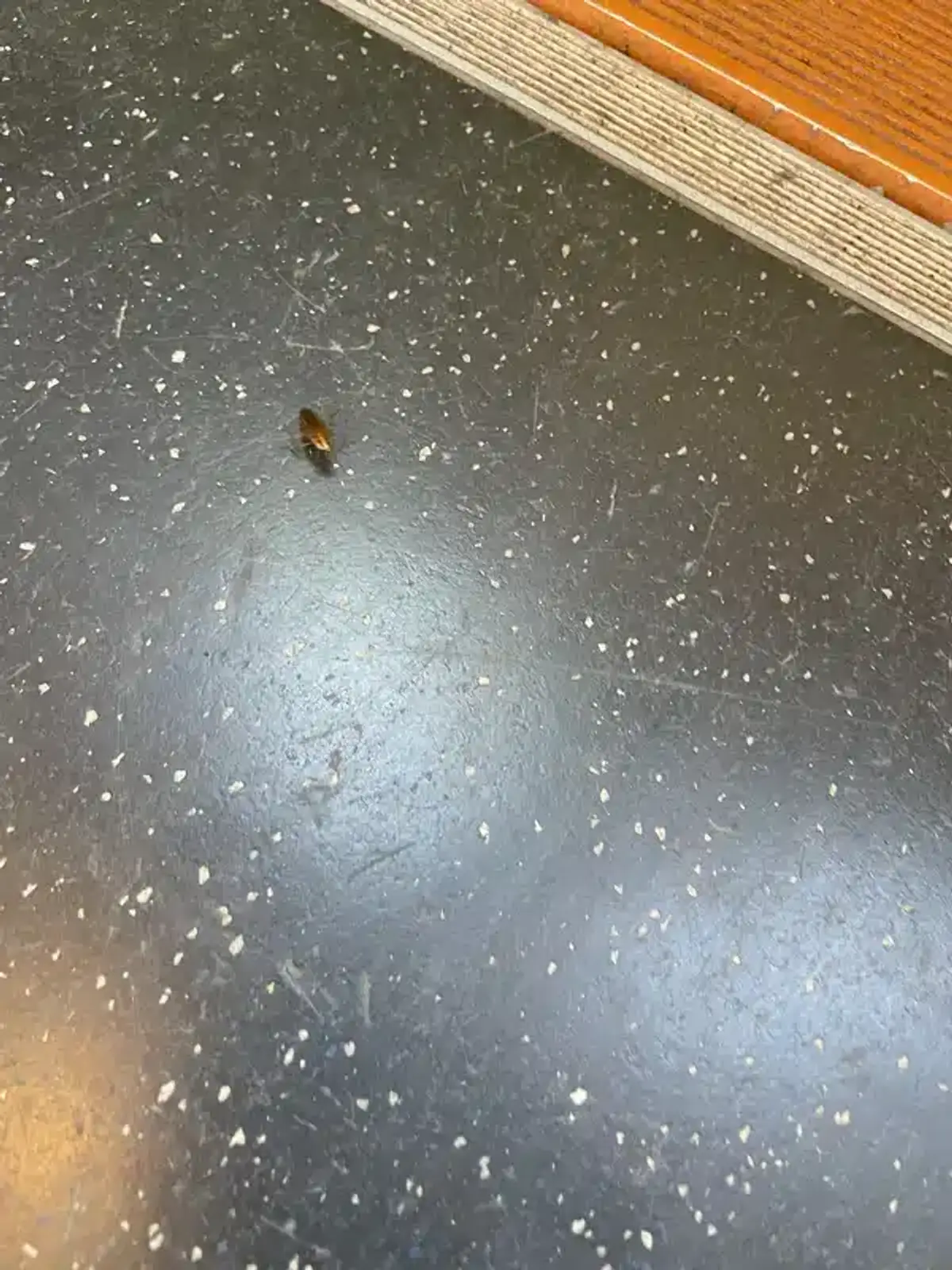
Simple Removal Methods for Wood Roaches
The good news about wood roaches is that removal is straightforward. Since they can’t survive or breed indoors, you simply need to remove the individuals you find:
- Physical removal: Sweep, vacuum, or capture wood roaches and discard them outside
- Prevention: Switch porch lights to yellow LED “bug lights” during peak season
- Exclusion: Install tight door sweeps and repair window screens
- Firewood management: Store firewood at least 20 feet from your foundation
Unlike treating indoor flying cockroaches, wood roaches don’t require chemical treatments or ongoing pest control programs.
When Professional Pest Control is Necessary for Cockroach Infestations
Understanding wood roach vs cockroach differences helps you know when to call professionals. Wood roaches don’t require pest control treatment because they can’t establish indoor populations.
However, several signs indicate you’re dealing with indoor cockroaches that need immediate professional attention:
- Multiple roaches found throughout the year, not just May-June
- Small roaches (less than ¾ inch) with dark stripes scurrying when lights turn on
- Roaches found in kitchens, bathrooms, or near food sources
- Evidence of droppings that look like coffee grounds or pepper
- Egg cases (oothecae) found in cabinets or behind appliances
When to Call Professional Pest Control
- Size Matters: Small roaches under ¾ inch are almost always indoor German roaches requiring immediate treatment
- Behavior Check: Indoor roaches dart away quickly when disturbed, unlike slow-moving wood roaches
- Location Alert: Roaches in kitchens, bathrooms, or near food indicate serious indoor infestations
- Evidence Search: Droppings, egg cases, or musty odors mean indoor breeding populations need professional elimination
Our registered technicians have treated thousands of cockroach infestations across Northern Virginia, Alexandria, and Bethesda. We use targeted treatments that eliminate indoor breeding populations while being mindful of your family’s health.
Why Wood Roaches Don’t Need Pest Control
Professional pest control isn’t necessary for wood roaches because they’re temporary visitors, not permanent residents. Penn State research confirms that pesticide barrier treatments offer only marginal benefits and should be used as a last resort.
Wood roaches naturally die within days indoors, so removing individuals as you find them solves the problem. Contrast this with German roach control, which requires integrated baiting, sanitation, and growth regulators because untreated populations rebound quickly.
This is why our approach focuses on education first. When homeowners understand they’re dealing with harmless wood roaches rather than disease-carrying indoor species, they can avoid unnecessary chemical treatments.
If you’re unsure whether you’re seeing wood roaches or indoor cockroaches, our licensed technicians can help identify the species over the phone or during a property inspection. We’ve found that many homeowners feel relieved to learn they don’t have a serious infestation requiring ongoing treatment.
The key takeaway in any wood roach vs cockroach comparison is this: wood roaches are outdoor insects that occasionally wander inside and die, while indoor cockroaches are serious pests that require professional intervention. Knowing the difference can save you time, money, and unnecessary worry about your family’s health.
If you’re finding roaches consistently throughout the year or notice signs of indoor breeding, don’t wait to address the problem. Contact our team at 703-683-2000 or email us at info@bettertermite.com for expert identification and treatment options.
Frequently Asked Questions
How can I tell the difference between a wood roach and a regular cockroach?
+
Wood roaches have distinctive pale or cream-colored edges along their wings and body, while indoor cockroaches typically have solid coloring. Wood roaches are also larger (about 1 inch), move slowly, and don't scurry away when disturbed like indoor species do.
Are wood roaches dangerous to have in my house?
+
Wood roaches are not dangerous and pose no health risks. They don't carry diseases, contaminate food, or produce allergens like indoor cockroach species. They're classified as nuisance pests that die quickly indoors due to dehydration.
Do wood roaches multiply inside homes?
+
No, wood roaches cannot breed or establish colonies indoors. They require outdoor moisture conditions to mate and lay eggs. Most wood roaches die within 48-72 hours inside heated buildings due to dehydration.
Why do I only see wood roaches in late spring and early summer?
+
Wood roaches are most active during their mating season from late May through June. Males fly toward lights during evening mating flights, which is when they accidentally enter homes. This seasonal pattern helps distinguish them from year-round indoor pest species.
Should I call pest control for wood roaches?
+
Professional pest control isn't necessary for wood roaches since they can't survive or breed indoors. Simple removal methods like vacuuming or sweeping them up, combined with exclusion techniques, are all that's needed to manage these occasional visitors.
What attracts wood roaches to my house?
+
Wood roaches are primarily attracted to bright lights during their mating flights. They also hitchhike on firewood stored near foundations or enter through gaps around doors and windows while seeking outdoor shelter in leaf litter and wood debris.
How do I prevent wood roaches from entering my home?
+
Switch to yellow LED "bug lights" on porches during late spring, store firewood at least 20 feet from your foundation, install tight door sweeps, repair window screens, and turn off unnecessary outdoor lighting during peak mating season in May and June.
When should I be concerned about cockroaches in my home?
+
Be concerned if you find multiple small roaches (less than ¾ inch) with dark stripes that scurry when lights turn on, discover roaches year-round rather than just in late spring, or find evidence like droppings or egg cases in kitchens and bathrooms. These signs indicate indoor breeding populations that require professional treatment.
With five years of hands-on experience in the pest control industry, George Schulz is a registered technician with the Virginia Pest Management Association and a proud third-generation professional in a family business that's been protecting homes for over 57 years. He manages and trains a team of service pros while also leading internal research efforts—recently spearheading a deep-dive review of thousands of documents on pest control materials to hand-pick the most kid and pet friendly, most effective solutions tailored specifically for homes in the DC metro area.
